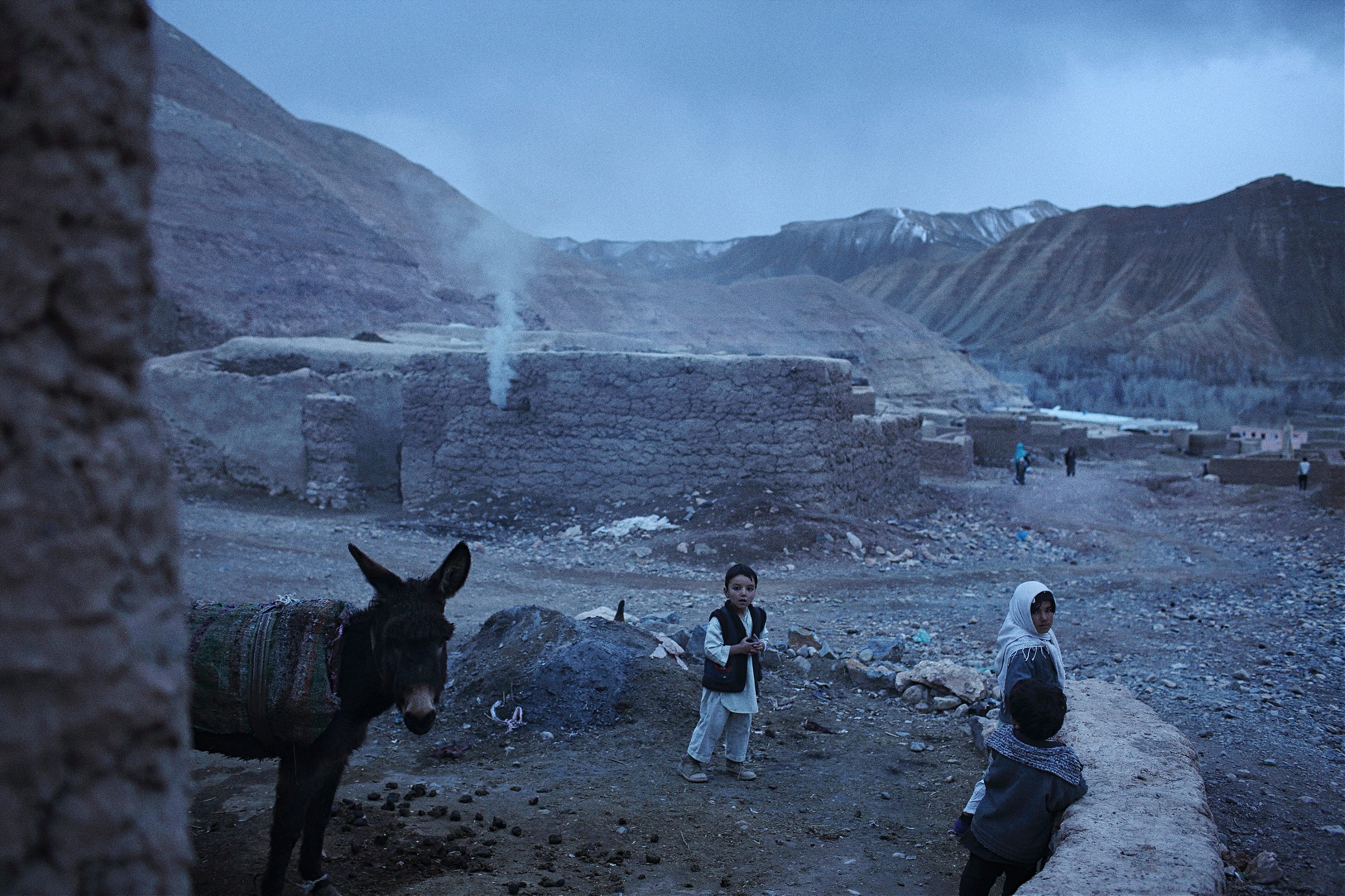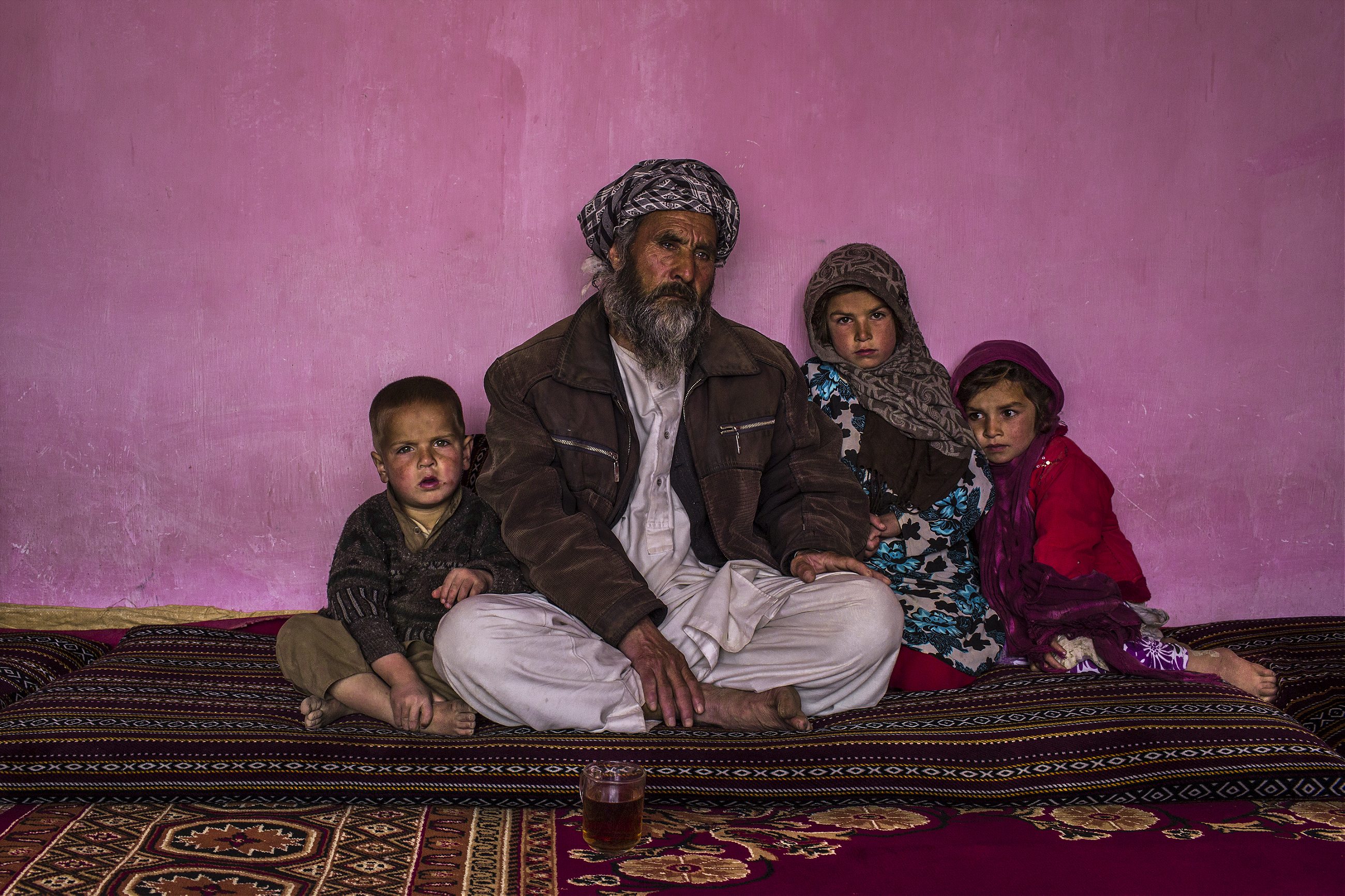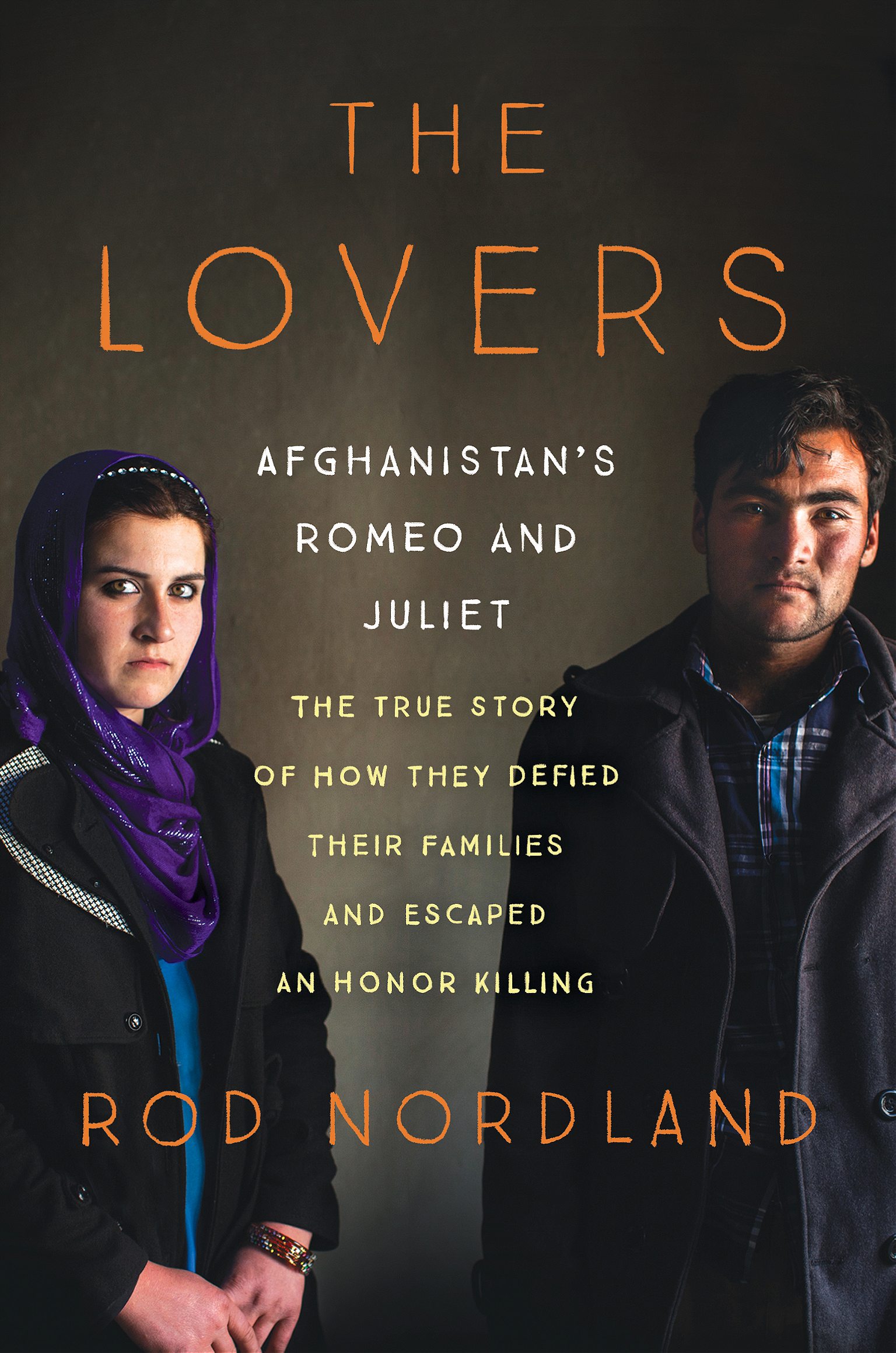An excerpt from Rod Nordland’s “The Lovers,” a true story of forbidden romance in Afghanistan.
Early in 2014, New York Times journalist Rod Nordland got wind of an honor killing in the making and headed off to the remote Bamiyan Valley in the Hindu Kush mountains of Afghanistan to investigate. He found the girl, Zakia, in a shelter for her own protection and the boy, Ali, moping around his village. They couldn’t see one another, and she couldn’t leave or her family would likely carry out their public threat to kill her because she wanted to marry against her father’s wishes. Afghanistan is one of the few countries in the world where honor killings count as socially acceptable behavior, so much so that few women targeted by their families ever escape successfully. Zakia did, though, eloping with Ali, and Nordland followed, chronicling the lovers’ flight through the rugged mountains of central Afghanistan, the slums of Kabul and even into neighboring Tajikistan. Nordland’s book, full of the lyrical Persian poetry and music that moved these young people, brings their story up to the present. In addition to a chronicle of a thwarted honor killing, it is also a richly reported look at the gender terrorism that makes Afghanistan today the worst place in the world to be a woman—let alone to be a woman in love.
The past can be your real destiny, and theirs was messy. Both Zakia and Ali were too young to remember when the Taliban came over the Shibar Pass through the Hindu Kush mountains and into the Bamiyan Valley in 1998. By that point, two years into its conquest of Afghanistan, the Taliban were used to winning ground. They held all of central, western, and southern Afghanistan and most of the north, with the exception of areas controlled by the forces of Ahmad Shah Massoud and his alliance, in the far north, and by Hezb-i-Wahdat, the Hazara militia, in the north-central highlands of Bamiyan Province and Hazarajat. There was no love lost between Massoud’s Tajiks and Hezb-i-Wahdat’s Hazaras, partly because Massoud’s forces had carried out a notorious massacre of Hazaras in Kabul during the civil war a few years earlier and partly because the dominant Hazaras had abused the Tajik minority in Bamiyan city. The Hazaras initially beat back the Taliban in 1998. Abandoned by the more numerous and more powerful Tajiks, however, the Hazaras in Bamiyan succumbed when the Taliban returned in force the following year, carrying out massacres in Bamiyan city and in the Yakawlang Valley in which they killed every male they could find older than thirteen.
Both their families fled the valley during that time. First Zakia’s Tajik family headed north to Baghlan Province to flee the Hazaras and the Taliban, and then Ali’s family fled to the Koh-i-Baba mountain heights and across into Wardak Province to the south, escaping both the Pashtun Taliban and the Tajiks. There had always been religious tensions between Afghanistan’s Sunnis, who include Tajiks, Uzbeks, and Pashtun ethnic groupings, and its Shia, who are mostly Hazara. The Taliban’s extremist Deobandi version of Islam decreed that all Shia were heretics and justified killing them, a view they shared with Al-Qaeda. There was also a racial aspect to the conflict, since Hazaras are more Asian in appearance while Tajiks and Pashtuns are more Caucasian, although there are many exceptions. Tajiks and Pashtuns have traditionally derided Hazaras as outsiders, seeing them as the descendants of Genghis Khan’s invading armies of eight hundred years ago; Hazaras have never forgiven the Pashtuns for enslaving them in the nineteenth century.

After the Taliban conquest of the province, Hazara and Tajik families with young children began to return to their homes, without their men, particularly families whose children were too young to be viewed as fighters, which was the case with the families of Zakia and Ali. Ali is just old enough to remember the last couple years of the Taliban regime and its occupation of the Bamiyan Valley; in 2001, their last year in power, he would have been seven or eight. His older brothers and father were old enough to be considered fighters, so they fled; he stayed with the women at home. “They were treating Shia people badly, even the children,” Ali said. “If you were not Shia, you were not treated badly, but even the chicken of a Shia was treated badly.”
With the American-led invasion, the Taliban withdrew and the men came back down from the mountains. Ali remembers that as his childhood’s happiest time. “My father and brothers came home, and we thought we were reborn then. Even now when my father calls me on the phone sometimes, he remembers that time and cries, ‘How can you be away from me for so long?’”
Zakia’s family suffered less from the Taliban occupation since they were Sunni Muslims, but her paternal grandfather, Ali Ahmad, had a difficult time during the great Bamiyan drought. Beginning during the latter years of the reign of King Zahir Shah, just before the beginning of the Soviet occupation in 1979, the drought continued through the civil-war years that followed in the eighties and nineties. Bamiyan is a high desert. Agriculture there depends mostly on snowmelt from the mountain ranges that encircle the Bamiyan Valley, and in those days there were no hydraulic works or reservoirs that the farmers could depend upon. Ali Ahmad fell into debt and sold off his fields one by one, until all he had left to pass on to his son Zaman, Zakia’s father, was a house and compound in Kham-e-Kalak village—a substantial place by local standards, with doors and glass windows set into the mud-brick walls—and an adjoining small garden patch, half a jreeb, about a quarter acre, which went to Zaman’s brother. By the time Zakia was growing up, Zaman had been reduced to sharecropping, working fields rented from more prosperous neighbors, and paying his brother to be allowed to use the walled garden patch next to the house.

Ali’s father, Anwar, was luckier. Of his modest ten jreebs of land (about five acres), six were well watered enough for his crops to survive the drought years, so he never had to sell his land. The Hazara villagers in Surkh Dar generally were worse off than their Tajik neighbors in Kham-e-Kalak down below. Anwar’s family was house-poor, and to this day they have little more than mud shacks to live in. But thanks to the vagaries of the region’s ancient irrigation system, they survived the drought better than most and were more prosperous than Zakia’s family. Anwar was able to spare three of his sons from farmwork so they could go to a few years of school. In Zakia’s family only her youngest brother, Razak, who was age nine in 2014, attended any school. Anwar remained in the shabby mud huts, arranged facing a courtyard that did not even have a wall all the way around it as most rural Afghan homes do. But whatever surpluses there were from potato farming he invested in his children’s education.
Zakia would see other village girls, especially among the Hazara in Surkh Dar, the upper village, heading off to school in their blue tunics and white head scarves; the Hazara, so long an underclass in Afghanistan, put a great deal of store in education and were early and enthusiastic adopters of girls’ schools when they were restarted in Afghanistan after the Western intervention in 2001. When Zakia asked her father if she, too, could go, his answer was, “No, we’re too poor.” Instead, like her siblings, she was put to work in the fields, bringing in harvests, plucking weeds, gathering hay as fodder for the animals, and tending sheep as they foraged.
When she was a young girl, Zakia’s playmates were not her sisters but her brothers; she was the ringleader and the doll maker. Childhood was a happy time, and on the Eid holidays Zakia and the other kids, boys and girls, would go down to the river and try to catch the little fish they saw there in the crystal-clear pools. Gender differences did not matter when they were young. She taught her brothers how to make dolls from rags and straw, string and bits of stick. “We were all close friends then, my brothers and sisters. The happiest times were when there were wedding parties and we could run around having fun on both sides.” Unlike adults, children could go to either the male or the female side of the segregated wedding parties, where there was much dancing, although never between the sexes; in their poor community, no one ever had weddings in a hall but used their homes instead, nonetheless strictly separating everyone by gender.

“When we were young, we were all intimate and friendly with one another, but later on, when we grew up, my brothers got so hard with me,” she said. That’s commonplace in Afghan families; the brothers are often the most enthusiastic enforcers of their sisters’ chastity, partly because the family’s honor affects their own marriage prospects and possibly sometimes in guilty response to the sexual tension that can exist between siblings of the opposite sex growing up in close quarters. “My brothers had more control over me than my father did. Whenever they saw me, they would ask me to go inside or to hide myself from strangers, ask me to wear a bigger scarf to cover myself. If I went shopping, they would force me to wear the burqa, which I hated.”
When I was able to interview her months later while she and Ali were in hiding, Zakia, who usually came across as the properly shy, self-effacing young Afghan woman, would change when recalling those years. “I hated the burqa before, and I hated it then, and I hate it now. It was really something designed to punish women.” Made of a rubbery synthetic material, the classic blue Afghan burqa is a heavy garment, deliberately shapeless, with a mesh grille over a small part of the face to allow some air and vision; it is hot and extremely uncomfortable, many times more unpleasant to wear than an Iranian chador or an Arab abaya. Some Afghan men insist, in the absence of any theological evidence, that it is a religiously sanctified garment.
Excerpted from The Lovers: Afghanistan’s Romeo and Juliet, the True Story of How They Defied Their Families and Escaped an Honor Killing by Rod Nordland. Copyright © 2016 by Rod Nordland. Published by Ecco, a division of HarperCollins.
